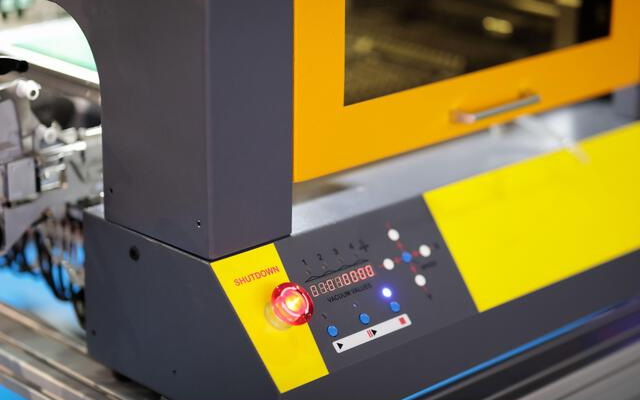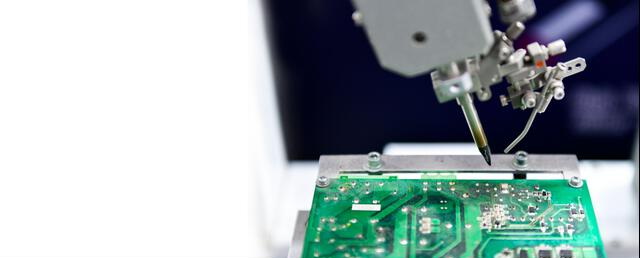Content Menu
● The Evolution of PCB Technology
● Understanding Surface Mount Technology
>> Key Features of SMT
● The Importance of SMT in Modern Electrical PCB Designs
>> Enhanced Design Flexibility
>> Miniaturization and Portability
>> Improved Electrical Performance
>> Cost-Effectiveness in Manufacturing
● SMT Process and Its Impact on PCB Design
>> The SMT Assembly Process
>> Design Considerations for SMT
● Challenges and Limitations of SMT
>> Rework and Repair
>> Heat Sensitivity
>> Mechanical Stress
● The Future of SMT in Electrical PCB Design
>> Smaller Components
>> Advanced Materials
>> Integration with Other Technologies
● SMT's Role in Emerging Technologies
>> Internet of Things (IoT)
>> 5G and Beyond
>> Automotive Electronics
>> Medical Devices
● Best Practices for SMT PCB Design
● The Environmental Impact of SMT
>> Material Efficiency
>> Energy Efficiency
>> Recyclability Challenges
● Conclusion
● FAQ
>> 1. What are the main advantages of SMT over through-hole technology?
>> 2. How does SMT contribute to the miniaturization of electronic devices?
>> 3. What are some challenges in implementing SMT in PCB design?
>> 4. How does SMT impact the electrical performance of PCBs?
>> 5. What future developments can we expect in SMT for electrical PCB design?
● Citations:
Surface Mount Technology (SMT) has revolutionized the world of electrical Printed Circuit Board (PCB) design and manufacturing. This innovative approach to component mounting has become indispensable in modern electronics, offering numerous advantages over traditional through-hole technology. In this comprehensive article, we will explore the reasons why SMT is essential for modern electrical PCB designs, its impact on the industry, and the challenges it presents.

The Evolution of PCB Technology
The journey of PCB technology has been marked by continuous innovation and improvement. From the early days of point-to-point wiring to the introduction of through-hole technology, the industry has always sought ways to enhance efficiency, reliability, and performance. The advent of SMT in the 1960s marked a significant milestone in this evolution, fundamentally changing the landscape of electronic manufacturing[1].
Understanding Surface Mount Technology
Surface Mount Technology is a method of PCB assembly where components are mounted directly onto the surface of the board, rather than through holes drilled into it. This approach allows for more compact designs, higher component density, and improved electrical performance[2].
Key Features of SMT
1. Miniaturization: SMT components are significantly smaller than their through-hole counterparts, allowing for more compact PCB designs.
2. Higher Component Density: The smaller size of SMT components enables designers to pack more functionality into a given area.
3. Improved Electrical Performance: Shorter connection paths reduce signal distortion and improve high-frequency performance.
4. Automated Assembly: SMT is highly compatible with automated manufacturing processes, increasing efficiency and reducing costs.
The Importance of SMT in Modern Electrical PCB Designs
Enhanced Design Flexibility
SMT offers PCB designers unprecedented flexibility in their layouts. The ability to place components on both sides of the board and the reduced size of SMT components allow for more creative and efficient designs. This flexibility is crucial in meeting the demands of modern electronic devices, which require increasingly complex functionality in ever-smaller form factors[5].
Miniaturization and Portability
One of the most significant advantages of SMT is its ability to facilitate miniaturization. As consumer electronics continue to shrink in size while expanding in capability, SMT has become indispensable. The reduced size and weight of SMT components contribute to the development of smaller, lighter, and more portable devices[2].
Improved Electrical Performance
SMT's impact on electrical performance cannot be overstated. The shorter connection paths between components reduce signal propagation delays and minimize electromagnetic interference. This improvement in signal integrity is crucial for high-frequency applications and contributes to the overall reliability of the circuit[3].
Cost-Effectiveness in Manufacturing
While the initial investment in SMT equipment can be substantial, the technology offers significant cost savings in the long run. The automated nature of SMT assembly reduces labor costs and increases production speed. Additionally, the smaller size of SMT components often translates to lower material costs[4].
SMT Process and Its Impact on PCB Design
The SMT Assembly Process
Understanding the SMT assembly process is crucial for PCB designers to optimize their layouts for manufacturability. The process typically involves the following steps:
1. Solder Paste Application: A stencil is used to apply solder paste to the PCB.
2. Component Placement: Automated pick-and-place machines position SMT components on the board.
3. Reflow Soldering: The board is heated to melt the solder paste, creating electrical connections.
4. Inspection and Testing: Automated optical inspection (AOI) and other testing methods ensure quality.
Design Considerations for SMT
To fully leverage the benefits of SMT, PCB designers must consider several factors:
1. Component Selection: Choosing the right SMT components is crucial for optimal performance and manufacturability.
2. Pad Design: Proper pad design ensures reliable solder joints and reduces the risk of defects.
3. Thermal Management: SMT's higher component density can lead to increased heat generation, requiring careful thermal design.
4. Signal Integrity: While SMT improves signal integrity, high-speed designs still require careful consideration of trace routing and impedance control.
Challenges and Limitations of SMT
Despite its many advantages, SMT is not without challenges:
Rework and Repair
SMT components can be more difficult to rework or replace compared to through-hole components. This can increase repair costs and complexity for some applications[4].
Heat Sensitivity
Some SMT components are sensitive to heat, which can pose challenges during the reflow soldering process. Careful temperature control and profile selection are necessary to prevent damage[2].
Mechanical Stress
While SMT connections are generally reliable, they may be more susceptible to mechanical stress than through-hole connections. This can be a concern in applications subject to vibration or shock[3].
The Future of SMT in Electrical PCB Design
As technology continues to advance, SMT is expected to evolve further:
Smaller Components
The trend towards miniaturization is likely to continue, with even smaller SMT components being developed to meet the demands of future electronic devices.
Advanced Materials
New solder materials and PCB substrates are being developed to improve the reliability and performance of SMT assemblies, particularly for high-temperature and high-frequency applications.
Integration with Other Technologies
SMT is increasingly being combined with other advanced technologies, such as embedded components and 3D printing, to create even more sophisticated and compact PCB designs.

SMT's Role in Emerging Technologies
Surface Mount Technology plays a crucial role in enabling many of today's cutting-edge technologies:
Internet of Things (IoT)
The compact nature of SMT is essential for creating the small, low-power devices that form the backbone of the IoT ecosystem. From smart sensors to wearable devices, SMT makes it possible to pack sophisticated functionality into tiny form factors[6].
5G and Beyond
The high-frequency performance improvements offered by SMT are critical for the development of 5G and future wireless technologies. The reduced signal path lengths and lower parasitic effects of SMT components contribute to the efficiency and speed of these advanced communication systems[5].
Automotive Electronics
As vehicles become increasingly electrified and autonomous, the demand for compact, reliable electronic systems grows. SMT enables the creation of sophisticated control units, infotainment systems, and safety features that are essential in modern automobiles[1].
Medical Devices
The miniaturization enabled by SMT is particularly valuable in the medical field, allowing for the development of smaller, less invasive devices. From implantable sensors to portable diagnostic equipment, SMT is at the heart of many life-saving technologies[3].
Best Practices for SMT PCB Design
To maximize the benefits of SMT in electrical PCB design, consider the following best practices:
1. Design for Manufacturability (DFM): Collaborate closely with manufacturers to ensure your design is optimized for SMT assembly.
2. Component Placement: Pay careful attention to component orientation and spacing to facilitate automated assembly.
3. Thermal Management: Incorporate proper thermal design techniques to manage heat dissipation in high-density SMT layouts.
4. Signal Integrity: Use appropriate trace widths, lengths, and routing techniques to maintain signal integrity in high-speed designs.
5. Prototyping and Testing: Thoroughly prototype and test SMT designs to identify and address any issues before full-scale production.
The Environmental Impact of SMT
As the electronics industry faces increasing pressure to reduce its environmental footprint, SMT offers several advantages:
Material Efficiency
The smaller size of SMT components and boards reduces the overall material consumption in electronic devices. This not only conserves resources but also reduces waste at the end of a product's lifecycle[2].
Energy Efficiency
The improved electrical performance of SMT designs often translates to better energy efficiency in the final product. This is particularly important for battery-powered devices and contributes to overall sustainability efforts[4].
Recyclability Challenges
While SMT offers many environmental benefits, the dense integration of components can pose challenges for recycling. As the industry moves forward, developing better end-of-life strategies for SMT-based products will be crucial[5].
Conclusion
Surface Mount Technology has become an indispensable part of modern electrical PCB design. Its ability to enable miniaturization, improve performance, and increase manufacturing efficiency has made it the standard for most electronic devices. As technology continues to advance, SMT will undoubtedly evolve, playing a crucial role in shaping the future of electronics.
The benefits of SMT, including enhanced design flexibility, improved electrical performance, and cost-effectiveness in manufacturing, far outweigh its challenges. As designers and engineers continue to push the boundaries of what's possible in electronic devices, SMT will remain at the forefront, enabling innovations that were once thought impossible.
By understanding the principles, benefits, and best practices of SMT, electrical PCB designers can harness its full potential, creating products that are smaller, faster, more efficient, and more reliable than ever before. As we look to the future, it's clear that SMT will continue to be essential for modern electrical PCB designs, driving progress in electronics across all industries.

FAQ
1. What are the main advantages of SMT over through-hole technology?
SMT offers several advantages over through-hole technology:
- Smaller component size, allowing for more compact designs
- Higher component density, enabling more functionality in a given area
- Improved electrical performance due to shorter connection paths
- Better suitability for automated assembly, reducing manufacturing costs
- Enhanced high-frequency performance, crucial for modern communication devices
2. How does SMT contribute to the miniaturization of electronic devices?
SMT contributes to miniaturization in several ways:
- SMT components are significantly smaller than through-hole components
- Components can be placed on both sides of the PCB, increasing space efficiency
- The higher component density allows for more functionality in a smaller area
- Reduced need for drilled holes allows for more compact board designs
- Shorter connection paths enable more efficient circuit layouts
3. What are some challenges in implementing SMT in PCB design?
While SMT offers many benefits, it also presents some challenges:
- More complex rework and repair processes compared to through-hole technology
- Increased sensitivity to thermal issues due to higher component density
- Potential for tombstoning (component lifting) during the soldering process
- Higher initial investment in specialized SMT assembly equipment
- More stringent requirements for PCB design to ensure manufacturability
4. How does SMT impact the electrical performance of PCBs?
SMT positively impacts electrical performance in several ways:
- Shorter connection paths reduce signal propagation delays
- Lower parasitic inductance and capacitance improve high-frequency performance
- Reduced electromagnetic interference due to smaller component size
- Better signal integrity, crucial for high-speed digital designs
- Improved power distribution due to the ability to use larger ground planes
5. What future developments can we expect in SMT for electrical PCB design?
The future of SMT in electrical PCB design is likely to include:
- Even smaller component sizes, pushing the limits of miniaturization
- Advanced materials for improved thermal management and electrical performance
- Integration with other technologies like embedded components and 3D printing
- Enhanced automated assembly techniques for even greater efficiency
- Development of more environmentally friendly SMT processes and materials
Citations:
[1] https://ksnpcb.com/surface-mount-technology/
[2] https://vectorbluehub.com/smt-assembly
[3] https://arkcircuits.com/blog/impact-of-smt-on-modern-pcb-design/
[4] https://www.wevolver.com/article/smt-process
[5] https://jlcpcb.com/blog/the-characteristics-of-surface-mount-technology
[6] https://www.advancedpcb.com/en-us/blog/the-most-common-uses-of-printed-circuit-boards-with-smt-technology/
[7] https://www.linkedin.com/advice/1/what-benefits-challenges-using-surface-mount-technology
[8] https://www.ablcircuits.co.uk/blog/what-is-the-smt-process-and-why-should-oems-care/
[9] https://www.myemssolutions.com/6-considerations-for-smt-pcb-design/




















